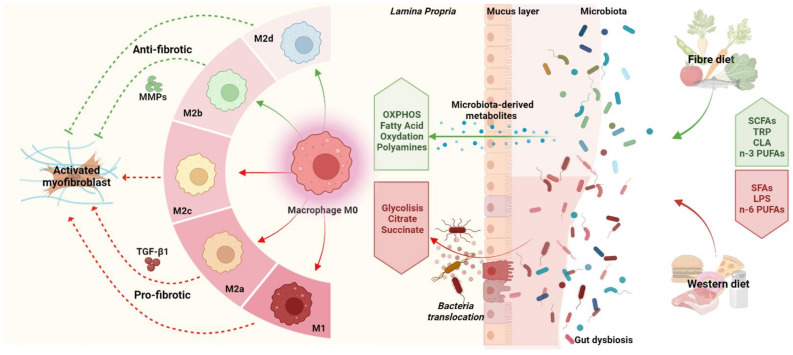Figure 2.
Interplay between diet, gut microbiota, and macrophages during intestinal fibrosis. The gut microbiota regulates intestinal macrophage phenotypes and functions by releasing specific metabolites derived from the metabolism of dietary components. Dietary fibre (green pathway) is metabolised by gut microbiota, leading to short chain fatty acid (SCFA) production, which in turn promotes M2b and M2d macrophage polarisation, which is characterised by an increase of lipid oxidation, providing sustained energy for macrophage anti-fibrotic functions. Dietary components can exert detrimental effects, activating pro-inflammatory and pro-fibrotic processes. The western diet (red pathway), characterised by high fat, high sugar and high salt contents, alters gut microbiota composition (dysbiosis), impairs the gut barrier and leads to n-3 polyunsaturated fatty acid (n-3 PUFA), saturated fatty acid (SFA), and lipopolysaccharide (LPS) production. In turn, macrophages undergo a metabolic reprogramming towards glycolysis and assume an M1, M2a, or M2c phenotype, leading to myofibroblast activation, producing ECM through TGF-β1 secretion.

